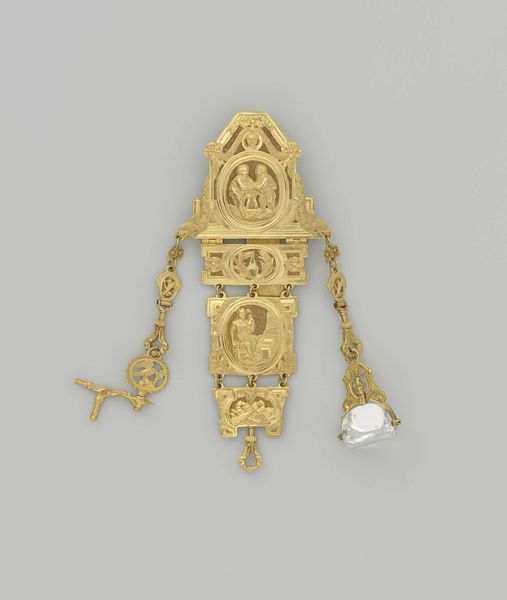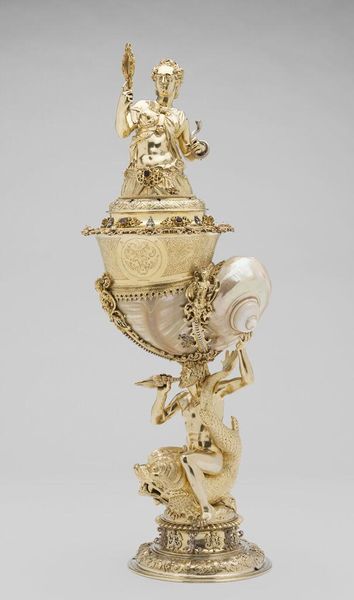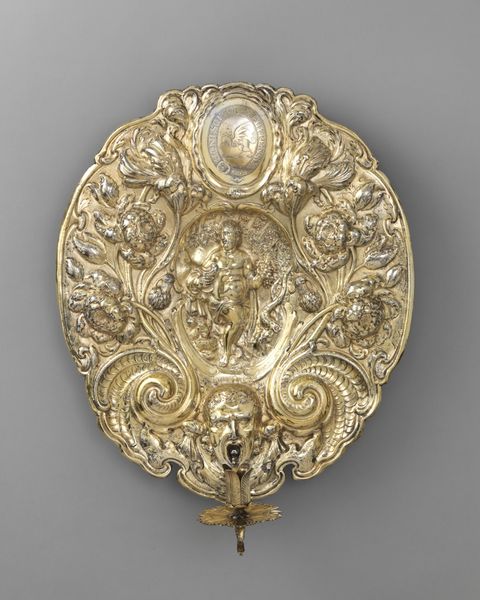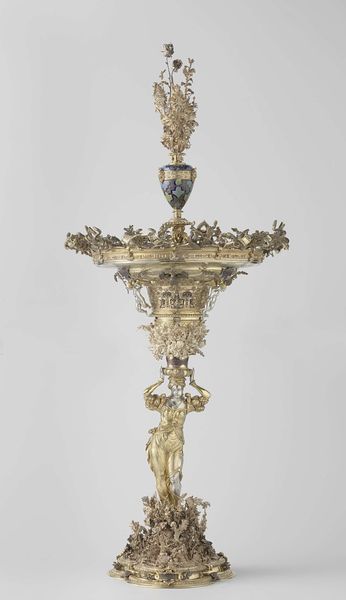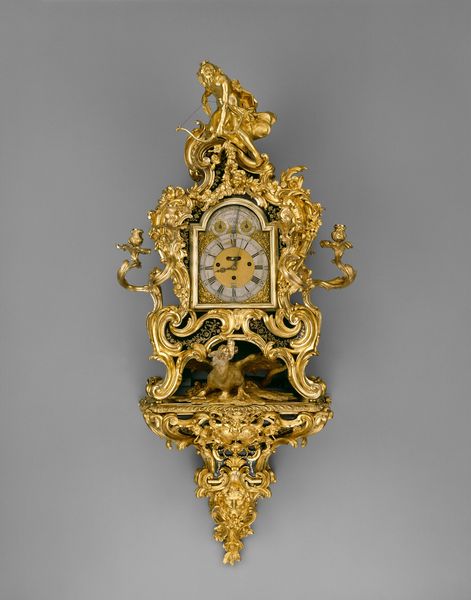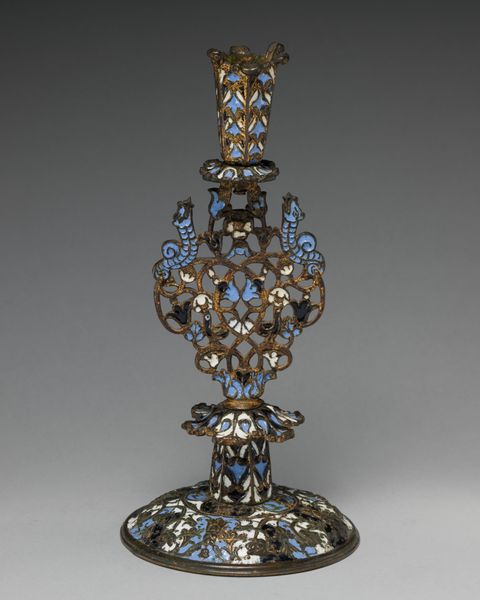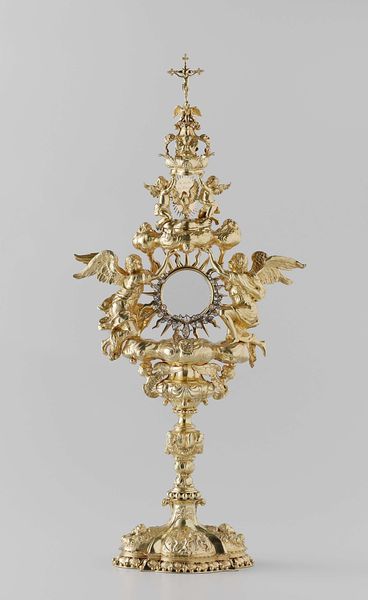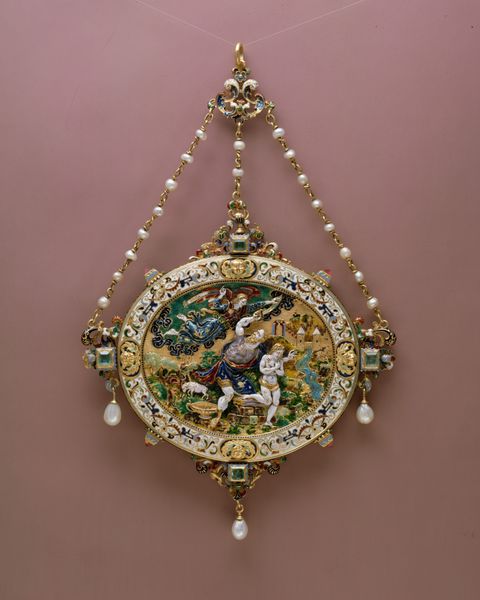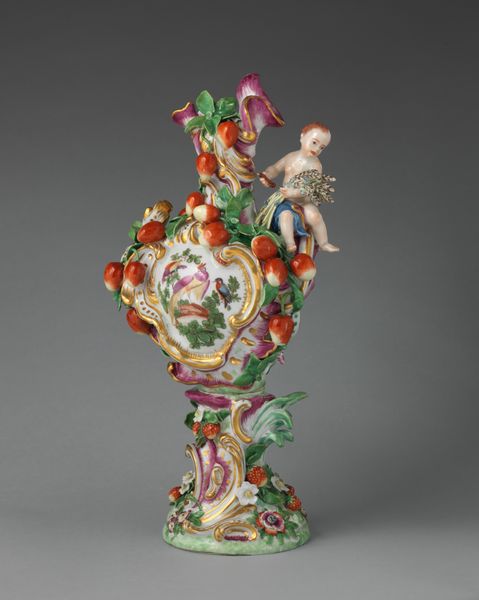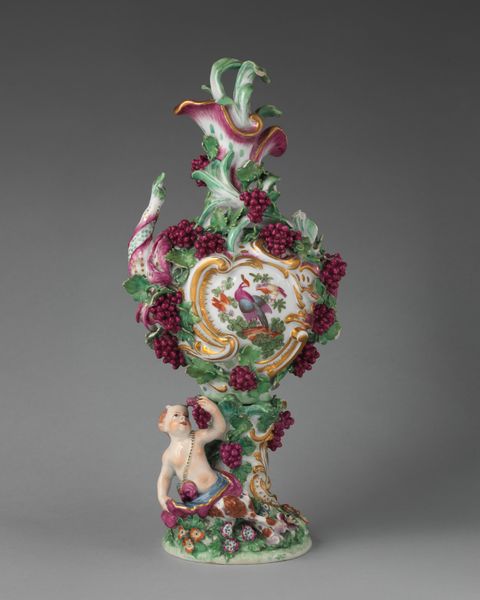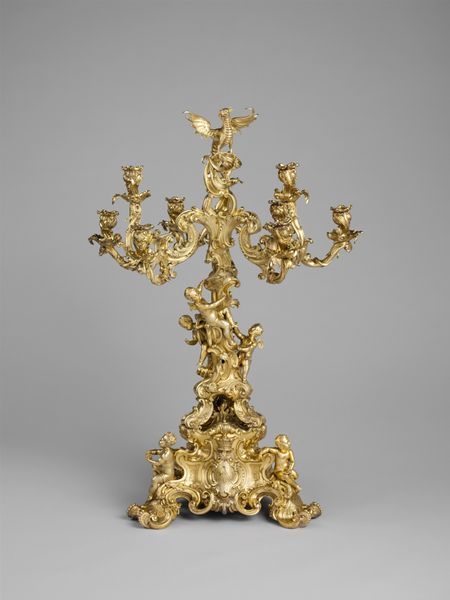
Armband met religieuze scènes (Benedictus van Nursia en Het onderwijs aan Maria) c. 1610 - 1640
0:00
0:00
silver, metal, gold, relief, sculpture
#
silver
#
narrative-art
#
metal
#
gold
#
relief
#
figuration
#
11_renaissance
#
sculpture
#
history-painting
#
miniature
Dimensions: length 18.0 cm, width 3.0 cm
Copyright: Rijks Museum: Open Domain
Curator: Looking at this intricate armband from circa 1610 to 1640, one is struck by the depth of its narrative potential. The piece is known as “Armband met religieuze scènes (Benedictus van Nursia en Het onderwijs aan Maria)," and it incorporates both silver and gold, brought to life through relief work. Editor: My immediate reaction is astonishment at the detail. The small scale belies the apparent labor involved. What kind of craftsperson would dedicate themselves so meticulously? I mean, just look at the texture – you can see it wasn’t stamped out; this was painstaking manual work. Curator: Absolutely. The band tells dual stories. On one section we see Benedict of Nursia. He embodies discipline and a rejection of earthly temptations, foundational to monastic life. Editor: Yes, but who created the design and controlled its consumption? Was it a collaboration? An ecclesiastical client dictating the imagery and a secular workshop fulfilling it? How were the raw materials, silver and gold, procured? Were they from the mines of the New World? That armband may tell several stories, but it definitely conceals several more about the world in which it was crafted and the economy that drove it. Curator: A very relevant point. Its form mirrors established hagiographic traditions, visually affirming Benedict's importance in this period. Similarly, the scene depicting the education of the Virgin Mary reflects the sacred roles prescribed to women, imbuing the artifact with layers of cultural significance about power and religious life. It represents the very values this piece was probably designed to promote. Editor: All I can think about is how many hours this single artwork took, who smelted the gold, who designed this piece? Someone literally bent metal to these artist's conceptions. These hands are what is missing from this story. Curator: Indeed, both artisans and patrons leave their marks. It’s been illuminating to consider both the symbolic language embedded within, and the manual skill to construct something with that narrative message so clearly articulated. Editor: Ultimately, we’re confronted by the very raw materials, by human endeavor and ingenuity that have become so estranged to us. That awareness, for me, dwarfs the symbolic intention.
Comments
No comments
Be the first to comment and join the conversation on the ultimate creative platform.
